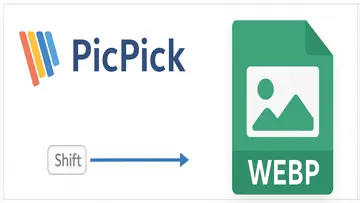Streamline Your Python Backend Development with PyBackend
PyBackend provides a robust set of tools and frameworks to simplify the process of building efficient and scalable backend services in Python, making it a favorite among developers.
PyBackend by K Raghu Prasad: A Comprehensive Review
PyBackend is a powerful software application developed by K Raghu Prasad, designed to help developers build robust backend systems for their applications. With its user-friendly interface and extensive features, PyBackend streamlines the process of creating and managing backend functionalities, making it an ideal tool for both beginners and experienced developers.
Key Features:
- Authentication and Authorization: PyBackend provides secure authentication and authorization mechanisms, allowing developers to control access to their applications effectively.
- Database Management: The software supports various databases, enabling users to manage data efficiently and effectively.
- RESTful API Development: PyBackend simplifies the process of developing RESTful APIs, making it easier to create interfaces for frontend interaction.
- Scalability: The application is highly scalable, allowing developers to handle a growing user base without compromising performance.
- Monitoring and Logging: PyBackend includes monitoring and logging capabilities, giving developers insights into the performance of their applications.
Benefits of Using PyBackend:
- User-Friendly Interface: With its intuitive interface, PyBackend makes backend development accessible to developers of all levels of expertise.
- Efficiency: By automating many backend development tasks, PyBackend helps developers save time and effort during the development process.
- Flexibility: The software offers flexibility in terms of customization, allowing developers to tailor backend functionalities to meet their specific requirements.
- Community Support: PyBackend has a supportive community of developers who are ready to assist with troubleshooting and providing guidance.
Who Should Use PyBackend?
PyBackend is well-suited for developers who are looking to streamline their backend development process and build scalable and secure applications. Whether you are a beginner looking to learn backend development or an experienced developer aiming to speed up your workflow, PyBackend offers a range of features to support your needs.
Final Thoughts
PyBackend by K Raghu Prasad is a comprehensive software application that simplifies backend development tasks, offering a wide range of features to support developers in creating efficient and secure applications. With its user-friendly interface, scalability, and community support, PyBackend is a valuable tool for anyone looking to enhance their backend development workflow.
Overview
PyBackend is a Open Source software in the category Development developed by K Raghu Prasad.
The latest version of PyBackend is 0.1, released on 02/18/2008. It was initially added to our database on 08/24/2007.
PyBackend runs on the following operating systems: Windows.
PyBackend has not been rated by our users yet.
Pros
- Easy to use and understand for beginners
- Can handle multiple types of requests
- Lightweight and efficient in terms of resource usage
Cons
- Limited in terms of scalability for larger projects
- Lacks advanced features compared to other backend frameworks
- Not as popular as other backend frameworks, which may result in fewer resources and documentation available
FAQ
What is PyBackend?
PyBackend is a Python framework for building backend applications.
Who is the creator of PyBackend?
PyBackend was created by K Raghu Prasad.
What are the key features of PyBackend?
PyBackend offers features like routing, middleware support, database integration, and more.
Is PyBackend open source?
Yes, PyBackend is an open-source framework.
What programming language is PyBackend written in?
PyBackend is written in Python.
Does PyBackend support async programming?
Yes, PyBackend has built-in support for asynchronous programming using libraries like asyncio.
Can I use PyBackend for building APIs?
Yes, PyBackend is well-suited for building APIs with its routing and middleware capabilities.
Does PyBackend have ORM support?
Yes, PyBackend supports integrating popular ORMs like SQLAlchemy for database operations.
Is there a large community around PyBackend?
Yes, PyBackend has a growing community of developers providing support and contributing to its development.
Where can I find documentation for PyBackend?
You can find documentation and usage examples for PyBackend on the official website or GitHub repository.

Peter Salakani
I'm Peter, a software reviews author at UpdateStar and content specialist with a keen focus on usability and performance. With a background in both software development and content creation, I bring a unique perspective to evaluating and discussing general software topics. When I'm not reviewing software, I enjoy staying updated on the latest tech trends, experimenting with new applications, and finding innovative solutions to everyday tech challenges.
Latest Reviews by Peter Salakani
Latest Reviews
|
eLecta Live Screen Recorder
Capture and Share Your Screen Effortlessly with eLecta Live Screen Recorder |
|
|
Office Shuttle Software
Streamline Your Office Commute with A4TECH's Office Shuttle Software |
|
|
|
Ashampoo AntiSpy Pro
Protect Your Privacy with Ashampoo AntiSpy Pro |
|
|
VeePN
Stay Anonymously Secure with VeePN |
|
Medal of Honor Warfighter v322991
A Disillusioning Return to the Battlefield |
|
|
|
DAEMON Tools iSCSI Target
Seamlessly Share Storage with DAEMON Tools iSCSI Target |
|
UpdateStar Premium Edition
Keeping Your Software Updated Has Never Been Easier with UpdateStar Premium Edition! |
|
|
Microsoft Visual C++ 2015 Redistributable Package
Boost your system performance with Microsoft Visual C++ 2015 Redistributable Package! |
|
|
Microsoft Edge
A New Standard in Web Browsing |
|
|
Google Chrome
Fast and Versatile Web Browser |
|
|
Microsoft Visual C++ 2010 Redistributable
Essential Component for Running Visual C++ Applications |
|
|
Microsoft Update Health Tools
Microsoft Update Health Tools: Ensure Your System is Always Up-to-Date! |





